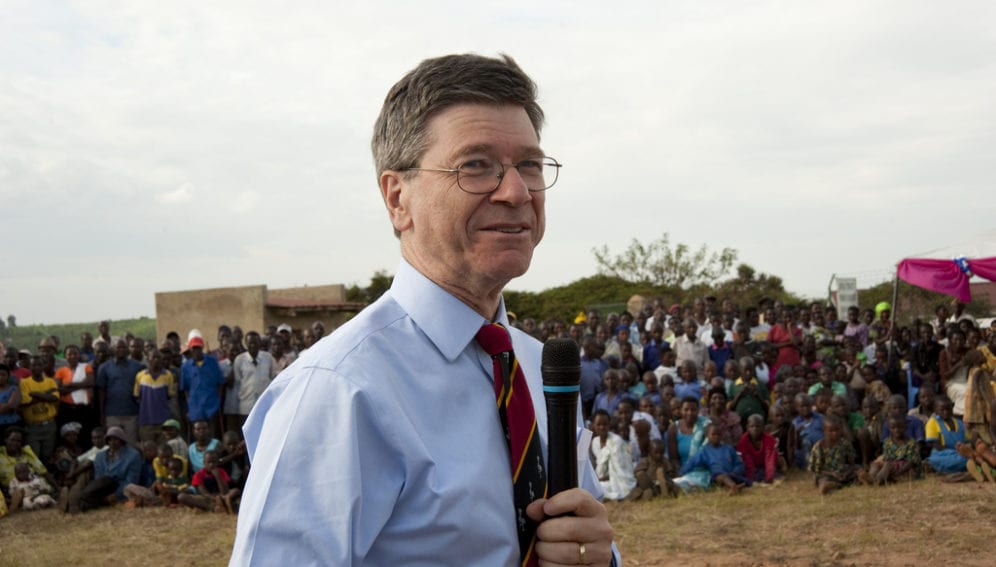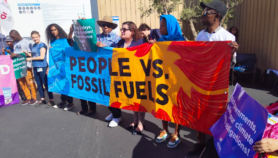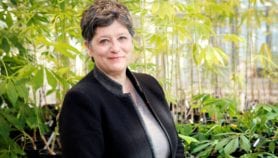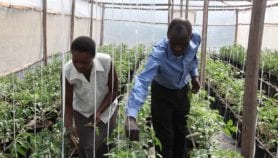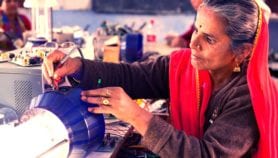Send to a friend
The details you provide on this page will not be used to send unsolicited email, and will not be sold to a 3rd party. See privacy policy.
The UN special advisor and director of a key science network tells SciDev.Net what the road to 2015 will look like.
With less than 1,000 days until the UN's Millennium Development Goals (MDGs) expire, efforts to design a new framework to replace them in September 2015 are gathering pace. What targets to include in these Sustainable Development Goals and how to measure them are some of the top priorities for the international development community, as the agreements reached will influence policy and practice up until at least 2030.
A key player in this process is the Sustainable Development Solutions Network (SDSN). Launched last August, the UN initiative — which brings together universities, research centres and technical institutions to generate practical sustainable development solutions —presented its suggestions to UN secretary-general Ban Ki-moon last week. The network's report follows one by the UN's High Level Panel of Eminent Persons on the Post-2015 Development Agenda.
Here Jeffrey Sachs, SDSN director and the secretary-general's special advisor on the MDGs, tells SciDev.Net what the road to 2015 will look like. He also highlights the scientific and technological changes that have occurred since the MDGs were created, how these will alter development activities and what steps are needed to maximise the benefit of these advances.
Is there any consensus on what the post-2015 agenda should look like?
When I presented the SDSN report to the secretary-general, he was glad to see that there was a lot of consistency between it and the High Level Panel report. He was also happy to hear that there is a growing worldwide understanding and consensus that sustainable development will be the organising principle of the post-2015 agenda. We really have the momentum. The world sees that a sustainable development concept — combining social, economic, environmental and governance issues into an integrated framework — is what we need. I find it very gratifying to know that the secretary-general does as well.
How will the reports by the SDSN and the High Level Panel be used?
The main step is that the secretary-general will now present the reports to the world's governments, probably in July, in the lead up to a UN General Assembly that will discuss the winding down of the MDGs and the post-2015 agenda, on 25 September. I believe that this will be an important moment for all of this, because if we pass through that meeting without results there could be a lot of problems.
But solid foundations will be laid if certain basic agreements are reached at that meeting that state that the post-2015 agenda will be defined by sustainable development comprising of social, economic, environmental and governance goals, for example. The remaining time between now and 2015 will define the specifics of these goals. These are the things that are in reach of agreement.
How positive are you that the General Assembly will produce a set of firm agreements on which future progress can be based?
I'm glad to say that there is a general consensus that the General Assembly will produce an outcome document that highlights agreements for a post-2015 agenda. If this can also outline a clear trajectory from MDGs to Sustainable Development Goals, that would be most promising.
Am I hopeful? It definitely can be done, but there are a lot of things to do and a lot of discussion between here and September. Let me put it this way: I'll be worried if it doesn't get done because these special meetings are quite important for moving a complex agenda forward. What's nice is that there doesn't seem to be a fundamental rupture — a North-South divide or any another for that matter — that threatens the basic outlook that sustainable development is the main objective. It is the fundamental pathway through which we can fight poverty and upgrade environmental considerations, and if we can actually reach agreements on that it will be a very important step.
The world has changed a lot since the MDGs came into force in 2000. What fundamental scientific and technological changes have occurred since then that will drive future development?
The change that is most deeply reshaping the world is the information revolution. Since the 1950s, we have had a roughly billion-fold increase in our capacity to create, transmit and store data and this is transforming every scientific field but also other sectors of the economy, such as education and health.
During the MDG period, we relied on household surveys, which were mostly three years out-of-date. This is an obsolete method. What we can now see is real-time data collection and use in a hundred ways using remote sensing, crowdsourcing, Geographic Information Systems (GIS) modelling and mobile connectivity. This will not only dramatically change the quality of data but also the very nature of system management. Up until now, adequate data of relevance to sustainable development has not previously existed, therefore I'm quite sure that the post-2015 period will be revolutionary as to how data are managed.
It will be interesting to see if national statistical agencies can rise to the occasion. Can these agencies become the champions for national and international development policy? It would require a big transformation, but there is a lot of excitement, so there is a good chance it will happen.
The second area that I would put my money on making a big impact is the nanotechnology revolution. The huge boost to materials efficiency and less-wasteful manufacturing processes will have a huge impact in areas such as solar energy and in producing construction materials that are more sustainable.
Both data collection and nanotech are enormously promising. They give us a direction, an arrow of possibility to target sustainable development.
But there is also another side. Some of the really threatening technologies are improving dramatically — the ability to drill for oil and gas anywhere on any seabed, fracking to extract natural gas and large-scale fishing methods, for example. These are amazing technological innovations that could wreck the world. So technology gives us opportunity, it does not set the path. We must work harder to determine which technologies, and with what applications, can help to further the ultimate goal of sustainable development.
What must be done to direct science and technology to ensure that they are working for sustainable development and not against it?
The first step is recognising that success is not about merely raising efficiency and productivity. We need to raise efficiency and productivity in ways that empower human wellbeing through choices of technology and by recognising planetary boundaries and ecosystem limits. This is because it is going to be profoundly destructive if we do it the wrong way. Politicians are currently resistant to that reality as the political system is extraordinary short term and not guided by science.
If we get past that initial step, the tools that are most lacking in all public discussion over the last 20 years are roadmaps for problem solving.
Take the United States as an example. It has absolutely no roadmap of any kind on how to decarbonise its energy system. Nobody has created a serious, detailed scenario of what it would need to get current emissions down by roughly 80 per cent. The politicians have been resisting it and for some reason academia and national science academies have not done it either. Some studies exist at local levels, but they have not reached national level. Even if the situation was better in America, these studies still do not exist for 90 per cent of the planet.
The same approach is needed for sustainable agriculture, where we don't really have any sense of the scenarios or technology pathways that show how we can grow more food while reducing the environmental impact.
This is one of the fundamental reasons why we are trapped. It's not enough to point out the risks, announce targets or express concern. One has to explain practical steps that need to be taken based on serious scientific and technological scenarios.
This is one of the highest priorities and a goal that the SDSN will be focusing very strongly on.
What does the scientific community need to do to help create these roadmaps?
Universities need to play a much larger role in integrated earth-system science and sustainable development. They need to be partners with governments and business in this intensive problem-solving. I regard the notion that 'we know what to do but don't have the political will' as wrong.
We don't have the political will that is for sure, but we also don't know what to do, in terms of being able to assign very practical technological and policy solutions.
Universities are vital for that as they aggregate across disciplines and they should have a lot of technological capacity. But the scientists have to be dealing with policy and connecting with policymakers. I'm hoping that the SDSN is a generation-long spur for organising this type of thinking in a constructive and novel way.
What I'm finding is a tremendous excitement in universities and governments around the world. Governments see that they are not really up to the task of dealing with the problems they face, so the notion that we need partnerships across all sectors is getting a lot of attention. After having delivered our report, the real work of this network is a 20-year horizon of helping to engage universities, think-tanks and high-tech companies.
Q&As are edited for length and clarity.


